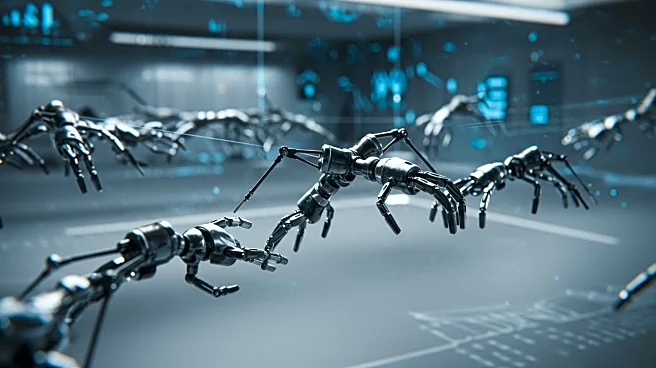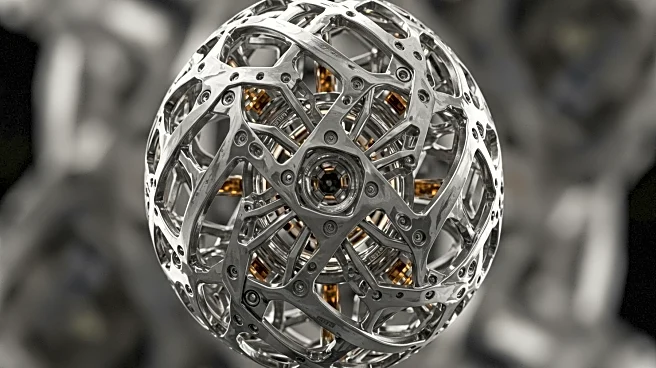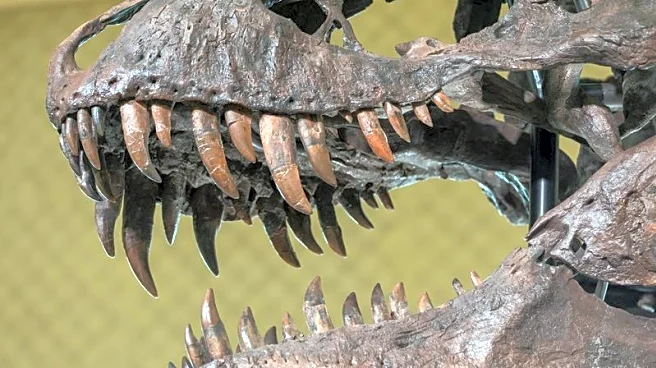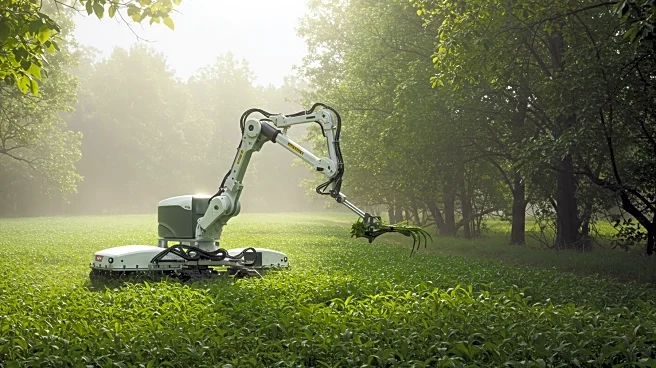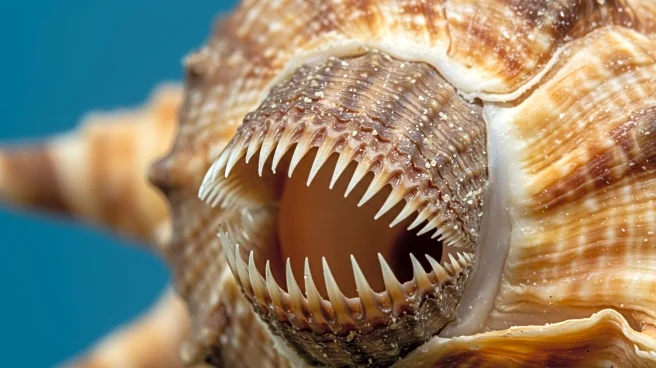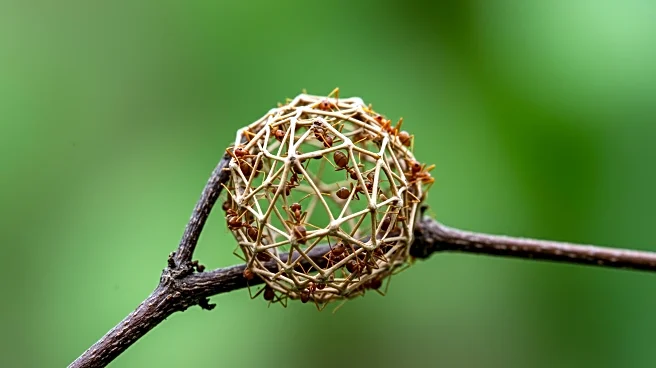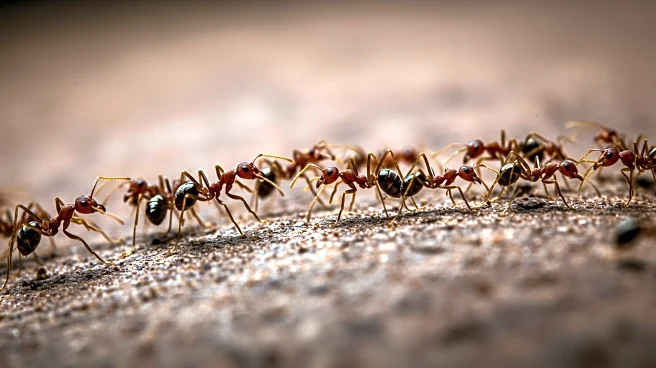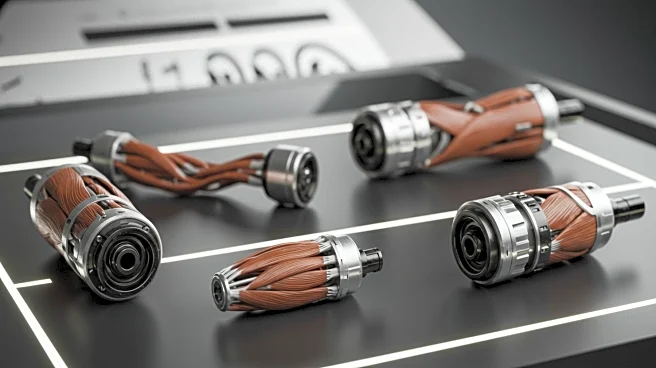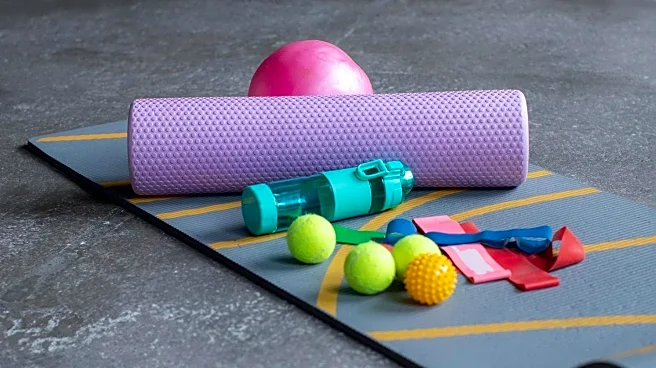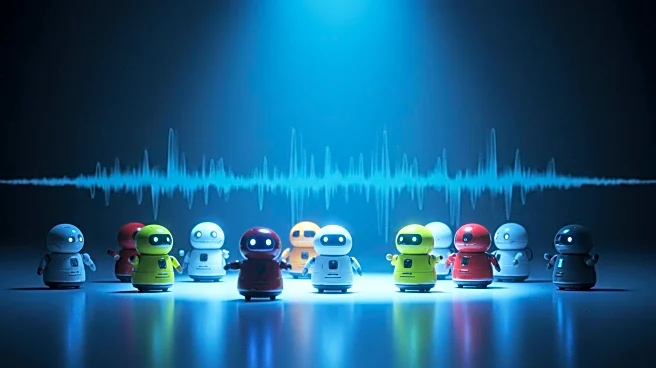What is the story about?
What's Happening?
Recent research published in Current Biology reveals that weaver ants exhibit a unique cooperative strategy that could transform robotics. Unlike human teams, where individual contributions decrease as team size increases, weaver ants enhance their pulling force as their group grows. This discovery was made by Madelyne Stewardson and Dr. Chris Reid from Macquarie University, who observed that these ants form super-efficient teams, increasing their contributions as the team expands. The study involved measuring the force applied by different-sized ant teams during nest-building activities, where ants split their work into active pulling and anchoring roles. This mechanism, termed the 'force ratchet' by Dr. Daniele Carlesso, allows ants to store and resist pulling force effectively, offering insights into designing better robot teams.
Why It's Important?
The findings from this study have significant implications for robotics, particularly in enhancing the efficiency of autonomous robot teams. Current robotic systems often fail to increase output when working in groups, unlike the weaver ants' strategy. By adopting ant-inspired cooperative strategies, robots could potentially work together more efficiently, improving performance in various applications such as construction, search and rescue, and manufacturing. This research highlights the potential for biomimicry in technology, where natural systems inspire innovative solutions to human challenges.
What's Next?
The next steps involve exploring how these ant-inspired strategies can be integrated into robotic systems. Researchers may focus on developing algorithms that mimic the ants' cooperative behavior, allowing robots to dynamically adjust their roles and contributions based on team size and task requirements. This could lead to advancements in swarm robotics, where large groups of robots work collaboratively to achieve complex tasks. Additionally, further studies may investigate other aspects of ant behavior that could inform robotic design, such as communication and decision-making processes.
AI Generated Content
Do you find this article useful?
